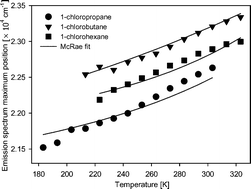Temperature influence on the energy of nonspecific and specific interactions taking place between 4-aminophthalimide (4-AP) and homogeneous solvents
Abstract
Temperature induced spectral shifts of the 4-aminophthalimide (4-AP)

* Corresponding authors
a
Faculty of Physics, Adam Mickiewicz University, Umultowska 85, Poznań, Poland
E-mail:
dobas@amu.edu.pl
Fax: +48 61 8257758
Tel: +48 61 8295015
Temperature induced spectral shifts of the 4-aminophthalimide (4-AP)

 Please wait while we load your content...
Something went wrong. Try again?
Please wait while we load your content...
Something went wrong. Try again?
K. Dobek, Photochem. Photobiol. Sci., 2008, 7, 361 DOI: 10.1039/B712159H
To request permission to reproduce material from this article, please go to the Copyright Clearance Center request page.
If you are an author contributing to an RSC publication, you do not need to request permission provided correct acknowledgement is given.
If you are the author of this article, you do not need to request permission to reproduce figures and diagrams provided correct acknowledgement is given. If you want to reproduce the whole article in a third-party publication (excluding your thesis/dissertation for which permission is not required) please go to the Copyright Clearance Center request page.
Read more about how to correctly acknowledge RSC content.
 Fetching data from CrossRef.
Fetching data from CrossRef.
This may take some time to load.
Loading related content
